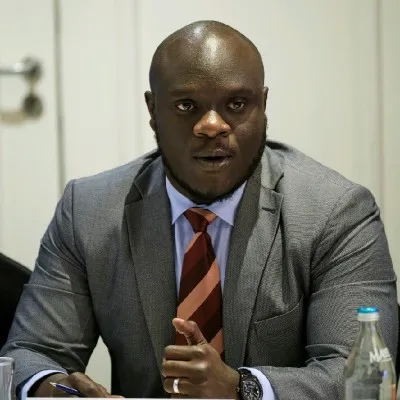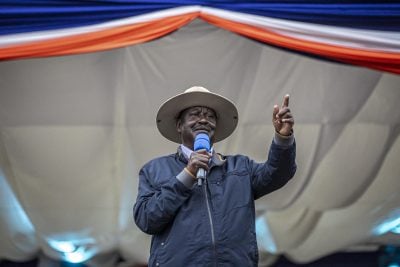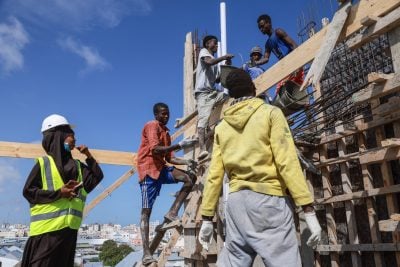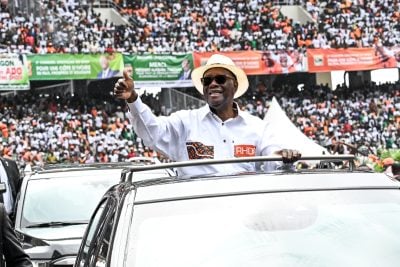President William Ruto’s recent efforts to raise around $2.6bn through tax increases failed after scores of protestors were killed in demonstrations across the country, compelling him to backtrack on the plan. The decision to abandon the contentious tax hikes, while politically expedient, has weighty implications for Kenya’s economy and its relationships with its creditors.
Kenya’s revenue shortfall has compelled Ruto to cut back on spending and rely even more dearly on creditors and the capital markets, signalling a challenging road ahead for economic recovery and debt management. The supplementary budget that the National Treasury recently presented to lawmakers shows that the country’s fiscal deficit has widened to 4.2% of GDP, from 3.3% that was forecast in the initial budget presented before the protests erupted. Additionally, the revised revenue is 9% lower than the initial forecast, while spending has been reduced by about 2%.
To bridge the gap, Kenya will tap into net external borrowing of Sh356.4bn ($2.72bn) and net domestic borrowing of Sh404.6bn ($3.04bn), Treasury principal secretary Chris Kiptoo told lawmakers while presenting revised budget estimates. He noted that the figures will likely change over the year.
Credit downgrades and expensive borrowing
Unsurprisingly, Moody’s has cut Kenya’s sovereign rating deeper into junk territory. The credit ratings agency downgraded the country’s local- and foreign-currency long-term issuer ratings and foreign-currency senior unsecured debt ratings to “Caa1” from “B3”, citing diminished capacity to implement a fiscal consolidation strategy to contain its debt burden.
“In the context of heightened social tensions, we do not expect the government to be able to introduce significant revenue-raising measures in the foreseeable future,” the ratings agency said. It affirmed its ‘negative’ outlook for Kenya, noting that the larger fiscal deficits will push up the country’s borrowing requirements.
Kenya needs about $26bn over the next decade to pay off existing foreign debts, according to David Ndii, chairman of Ruto’s Council of Economic Advisors. This calculation excludes annual interest of about $1.5bn, he posted on his account this July.
Ruto insists that he will make tough cuts to government expenditure – he asked the Treasury to review the annual pay increase for state employees that was set for this July. According to the BBC, other spending cuts announced by the President include the dissolution of 47 state corporations with overlapping functions; suspending the purchase of new vehicles for state officials for six months; suspending all non-essential travel for state officials; reducing government advisers by 50%; scrapping the budget for first lady and spouses of deputy president and the prime cabinet secretary; and enforcing the retirement of public servants at the age of 60.
Even with these cuts, Kenya faces the prospect of borrowing heavily to repay maturing loans. Worse still, the country is likely to secure these new loans on less favourable terms following Moody’s recent credit rating downgrade and the prevailing high-interest rate environment globally.
“There are a lot of governments around the world all facing the pain, delayed fiscal pain, from the interest rate hikes that we’ve seen in recent years,” said Charlie Robertson, head of macro-strategy at FIM Partners. He emphasised that “there are no easy solutions.”
“This decade will be a tightrope for Kenya…it will need to balance social peace with the need to cut spending and reduce its interest bill.”
IMF unlikely to budge
Robertson thinks the International Monetary Fund (IMF) is unlikely to provide Kenya with more support given that the country can’t meet goals in its current program with the lender. Kenya has secured a total of $3.6bn in loans from the IMF since 2021 when the country entered into a four-year loan agreement with the global lender. It expanded this financing in May last year to support climate change initiatives.
Before it disburses a tranche of an agreed financing package, the IMF requires regular reviews of economic reform programs to ensure borrowing countries have met the conditions they signed up to. In the case of Kenya, these reviews take place every six months. The IMF had reached a staff level agreement on the seventh review of Kenya’s programme in early June. However, the board had not approved the review when Ruto suspended the tax increases that were an integral part of its plans to meet the IMF’s targets.
The withdrawal of the finance bill “will likely result in Kenya missing the 4.7% fiscal deficit target this year and 3.5% target next year as per the IMF programme,” wrote Morgan Stanley’s Neville Mandimika in a note on Kenya.
In efforts to keep the IMF on board, Kenya has submitted an economic repair plan to the IMF and it expects the fund to review it for approval at the end of August, Musalia Mudavadi, the country’s chief minister, told lawmakers while presenting the revised budget estimates.
The government remains optimistic about the odds of getting a favourable response from the lender.
“It is our desire and hope that Kenya’s proposition will receive favourable consideration so that we can move beyond the challenges that we are facing,” said Mudavadi.
“In order for us to resolve our debt challenge we have to have a program with the IMF. It cannot be otherwise,” Mudavadi said. “If anybody continues to mislead people that you can walk away from the IMF and have your way, it is not true.”
He argued that the commercial loans that Kenya holds have been the costliest, not the concessional debt from the likes of the IMF and the World Bank.
Ruto’s tough choices
Midway through his tenure, Ruto confronts significant challenges. He must implement difficult economic policies to address Kenya’s mounting debt while simultaneously making critical political decisions to quell growing public unrest.
The widespread protests, marked by loss of life and property damage, have necessitated a delicate balance between maintaining public order and respecting citizens’ constitutional rights to dissent and picket as well as their freedom of assembly.
The violence meted out on protestors by the authorities has quickly made his administration overwhelmingly unpopular in the country, particularly among younger Kenyans belonging to the “Gen Z’ demographic cohort who blame the police for the more than 50 fatalities so far reported by human rights groups.
Putting an end to the protests will undeniably involve huge political risks, particularly in terms of how it could affect Ruto’s image abroad and especially in the United States, where he was recently hosted by President Joe Biden for a state visit – the first for an African head of state since 2008.
“We are deeply concerned by reports of violence, including shootings and abductions of protestors, journalists and others. Constructive engagement of citizens and civil society, aided by a free and independent media, is a pillar of democracy. These are the values we share with Kenya and which we must all protect,” read a statement on the protests by the US Embassy in Nairobi issued in July.
Even though Ruto has made some unexpected concessions to the protestors – including dropping the finance bill, dismissing members of his cabinet, and inviting the leaders of the demonstrations for dialogue – protestors have not backed down more than five weeks since protests initially erupted.
Ruto has now indicated that he is not willing to yield further ground, arguing that the protests have provided a cover for “anarchists and looters” to threaten Kenya’s democracy. “I want to promise you that it is going to stop, enough is enough. I have told them, it must now come to an end. I have given a chance to everybody to say whatever they want. I have called them for talks but they have refused saying they are faceless and formless,” the President told supporters at a recent political rally where he met local Church leaders in Bomet County.
The role of the IMF
Kenya’s latest woes have inescapably fueled debates on the role of the IMF in developing countries, with most commentators blaming the multilateral lender for imposing impossibly difficult conditions on borrowing countries.
In a press briefing in July, IMF spokesperson Julie Kozack, emphasised that IMF’s goal is to help Kenya build sustainable growth, generate jobs for the young population and promote programs to assist the less fortunate in society. She expressed the Fund’s “deepest sympathy to the people affected by tragic events in Kenya.”
“With respect to Kenya’s border situation, it’s important to say that the situation reflects broader challenges facing many of our low-income members,” she said. “Policymakers in these countries including Kenya face a complex balancing act; they have pressing spending needs in priority areas such as social programs, health and education. They are managing rising public debt and debt service. They also have the challenge of boosting domestic revenue,” Kozack added.
Kenya’s IMF-backed goal to increase tax revenue as a percentage of GDP to eventually reach 25% from the current 15% has been met with scepticism by some experts.They argue that the target is impractical in a country where the formal job sector encompasses only around 3 million individuals out of a population of 55 million. The challenge is compounded by the vast informal sector that operates largely beyond the tax system’s reach.
Jared Osoro, an economist in Nairobi, told African Business that “it is a noble ambition to try and raise taxes to finance development aspirations – but for that to be realistic, you must look at the structure of the economy. If the economy is substantially informal, it does not matter how fast it grows, it will always be difficult to collect sufficient tax.”
Ruto is not alone in facing public backlash against austerity measures imposed to satisfy multilateral lenders demanding fiscal discipline for affordable loans.
However, FIM’s Robertson argues that the IMF is often used as a convenient scapegoat. “The alternative for most countries is borrowing from the IMF at a low percentage or borrowing at double digits from commercial lenders at home or abroad,” Robertson remarked, describing the IMF as the “lender of last resort” and observing that most of the fund’s policy recommendations were decisions that governments would have to take either way.
Want to continue reading? Subscribe today.
You've read all your free articles for this month! Subscribe now to enjoy full access to our content.
Digital Monthly
£8.00 / month
Receive full unlimited access to our articles, opinions, podcasts and more.
Digital Yearly
£70.00 / year
Our best value offer - save £26 and gain access to all of our digital content for an entire year!

 Sign in with Google
Sign in with Google 



